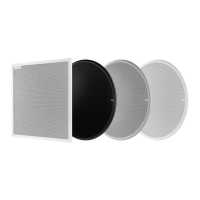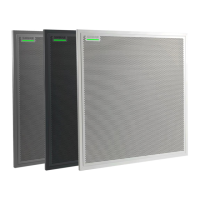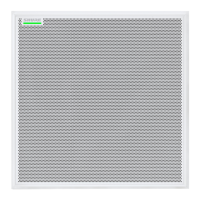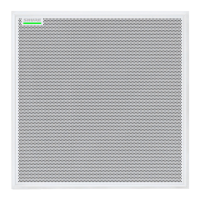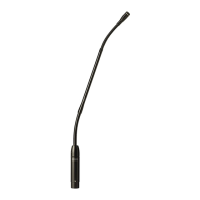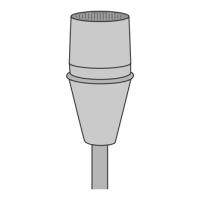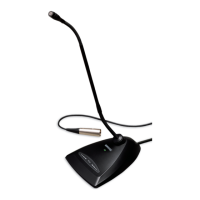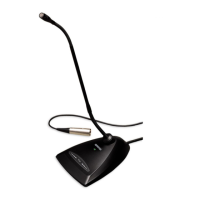Shure Incorporated
24/37
Target Level (dBFS)
Use -37 dBFS as a starting point to ensure adequate headroom, and adjust if necessary. This represents the RMS (aver
age) level, which is different from setting the input fader according to peak levels to avoid clipping.
Maximum Boost (dB)
Sets the maximum amount of gain that can be applied
Maximum Cut (dB)
Sets the maximum attenuation that can be applied
Tip: Use the boost/cut meter to monitor the amount of gain added or subtracted from the signal. If this meter is always reach
ing the maximum boost or cut level, consider adjusting the input fader so the signal is closer to the target level.
Delay
Use delay to synchronize audio and video. When a video system introduces latency (where you hear someone speak, and
their mouth moves later), add delay to align audio and video.
Delay is measured in milliseconds. If there is a significant difference between audio and video, start by using larger intervals of
delay time (500-1000 ms). When the audio and video are slightly out of sync, use smaller intervals to fine-tune.
Compressor
Use the compressor to control the dynamic range of the selected signal.
Threshold
When the audio signal exceeds the threshold value, the level is attenuated to prevent unwanted spikes in the output sig
nal. The amount of attenuation is determined by the ratio value. Perform a soundcheck and set the threshold 3-6 dB above
average talker levels, so the compressor only attenuates unexpected loud sounds.
Ratio
The ratio controls how much the signal is attenuated when it exceeds the threshold value. Higher ratios provide stronger
attenuation. A lower ratio of 2:1 means that for every 2 dB the signal exceeds the threshold, the output signal will only ex
ceed the threshold by 1 dB. A higher ratio of 10:1 means a loud sound that exceeds the threshold by 10 dB will only ex
ceed the threshold by 1 dB, effectively reducing the signal by 9 dB.
Automix
Automix Settings
Leave Last Mic On
Keeps the most recently used microphone channel active. The purpose of this feature is to keep natural room sound in the
signal so that meeting participants on the far end know the audio signal has not been interrupted.
Gating Sensitivity
Changes the threshold of the level at which the gate is opened
Off Attenuation
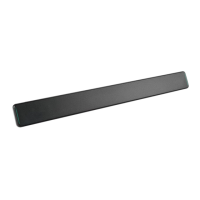
